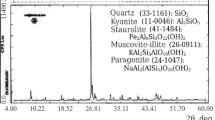Conclusions
Magnesites from Larginsk sources have variable chemical composition; together with high-quality varieties containing high MgO contents, there are also magnesite-dolomite rocks.
A feature of the Larginsk magnesites is the almost complete absence of sesquioxides.
Larginsk magnesites in lump-sample form and grains are poorly sintered at 1550° and 1700°C, owing to which they become brittle; in a number of cases they crumble and form cracks and a lot of fines.
Finely milled and then briquetted magnesite sinters satisfactorily.
Larginsk magnesites after firing are weakly hydrated, with the exception of magnesite with a high CaO content, specimens of which during storage tend to crack and dust.
The Larginsk magnesites with a high CaO content, with additions of magnesium silicate rock, can be used to make high-grade dense stabilized briquette.
Goods made from Larginsk magnesites by briquetting and also from burnt lumps correspond to GOST 4689-49; they have a high RUL, which reaches 1700–1750°C, and low porosity.
Magnesite-chromite and periclase-spinel goods made from Larginsk magnesite and chromite satisfy the basic requirements of technical specifications for these goods.
Dolomitized magnesites can be used to give stabilized magnesite-dolomite goods of very high density and with a high RUL.
The investigation of the Larginsk materials should be continued in semiindustrial and industrial conditions.
Similar content being viewed by others
Author information
Authors and Affiliations
Rights and permissions
About this article
Cite this article
Bron, V.A., Medyakova, M.V. Magnesites from Larginsk sources. Refractories 5, 75–81 (1964). https://doi.org/10.1007/BF01290461
Issue Date:
DOI: https://doi.org/10.1007/BF01290461




